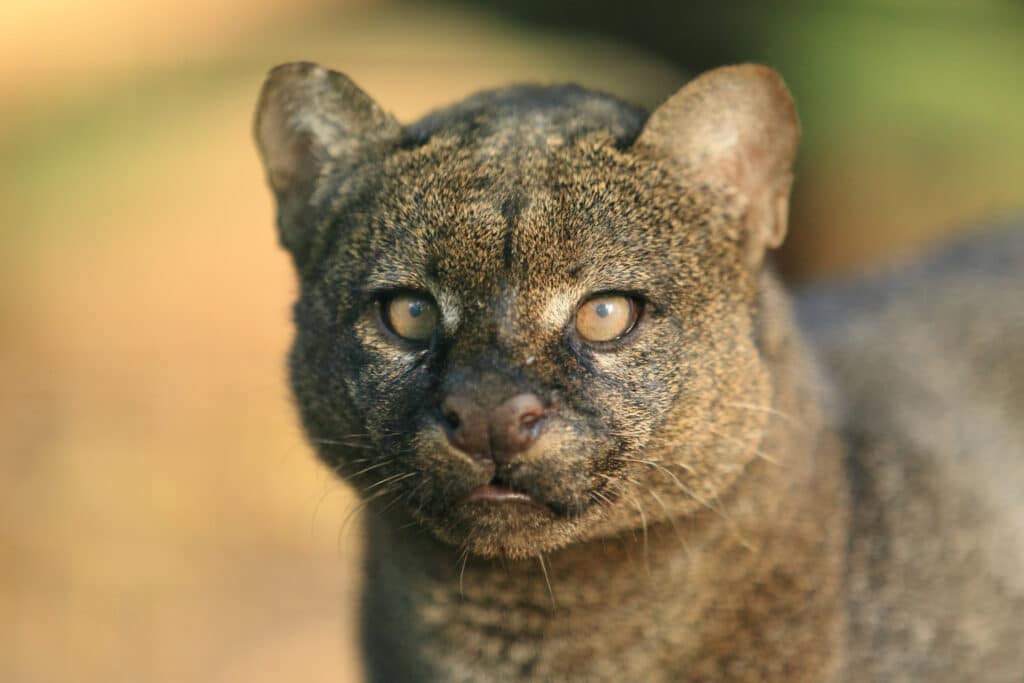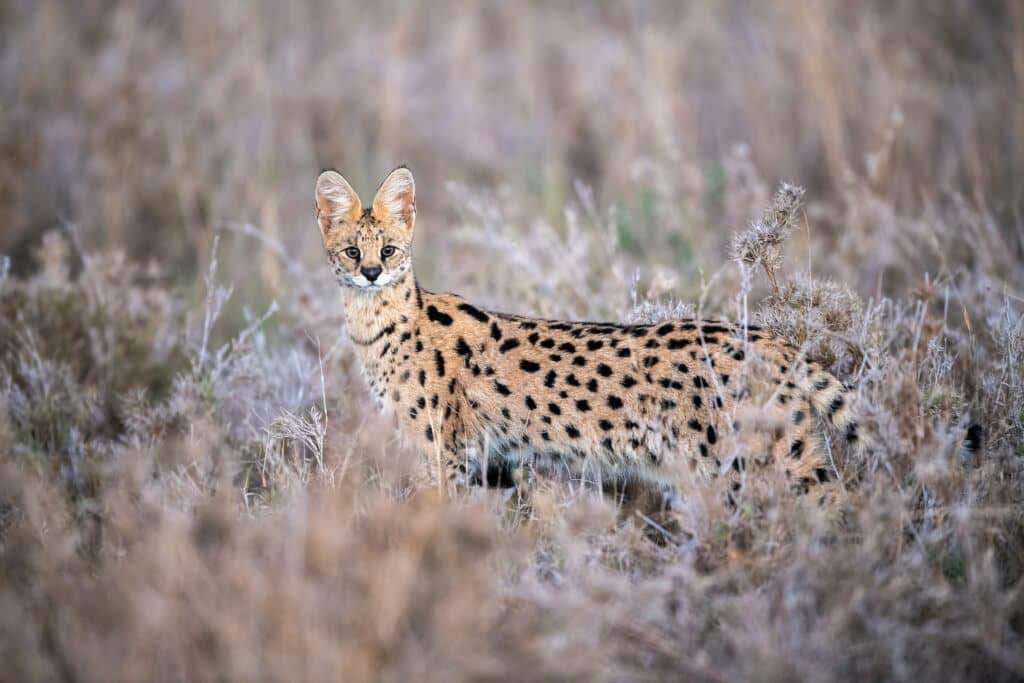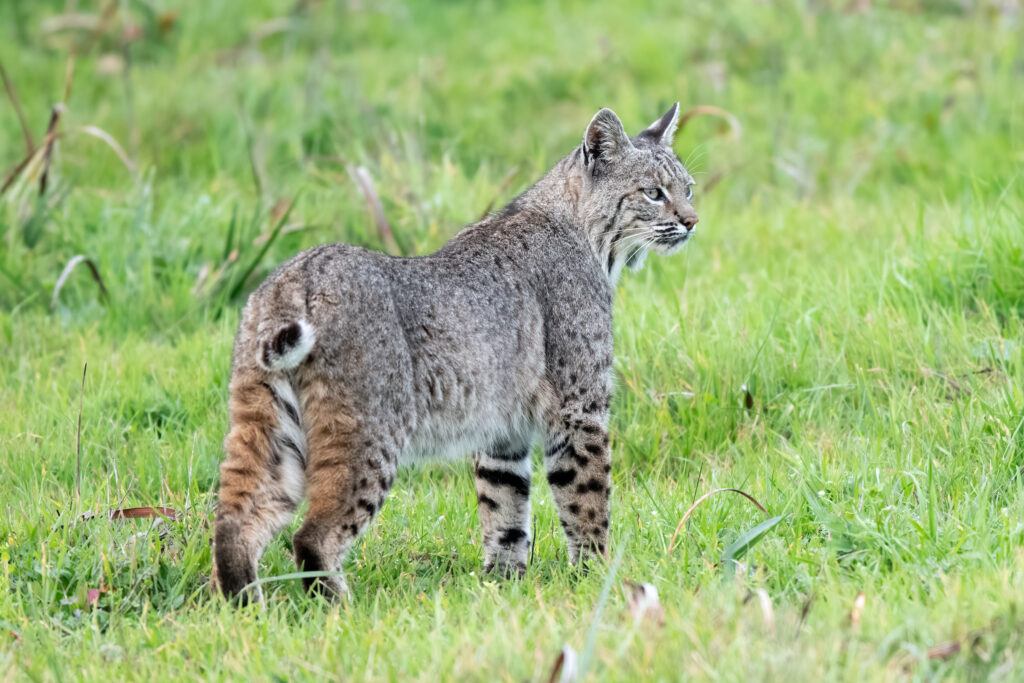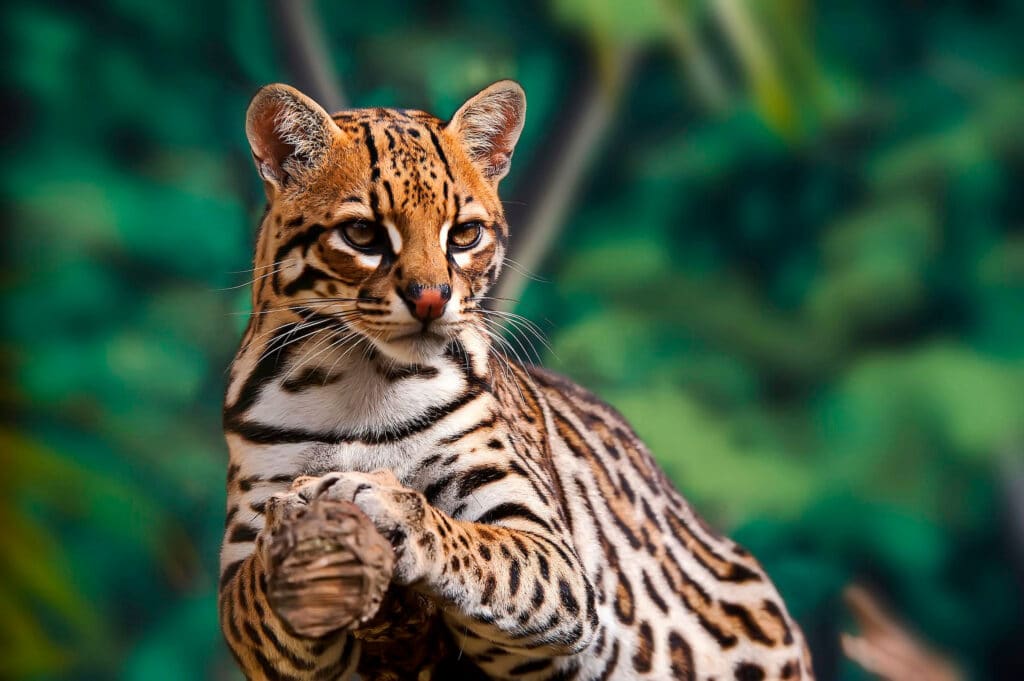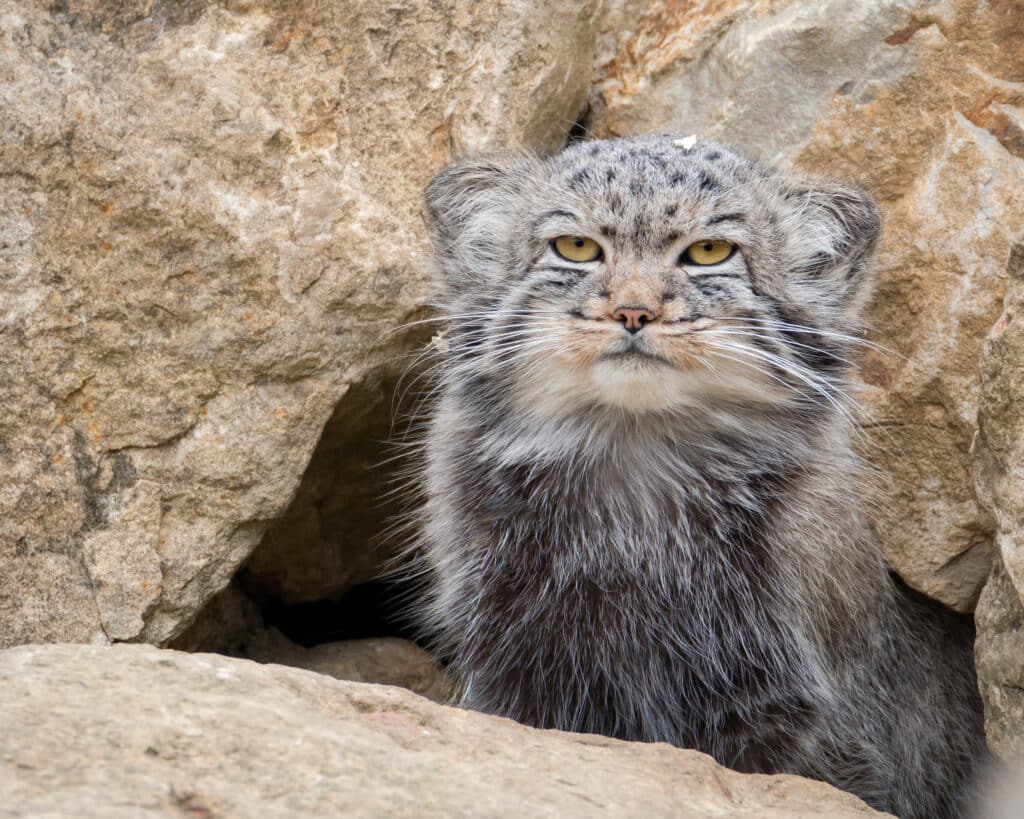In the late 1800s, some authors recognized 64 species of wild cats. Naturalist Daniel Giraud Elliot realized that the confusion in classification of cats resulted from great variation in coat pattern and color, body size, and dentition exhibited by individuals of most species. By closely examining skins and bones available in the great museums of America and Europe, Elliot determined that the number of species could be reduced. Nevertheless, Elliot also got caught in the same trap. For instance, he referred to the gray morph and the red morph of the jaguarundi as two separate and distinct species, although the two are identical in every other regard.
Even after the turn of the 20th century, coat variation created great confusion. Taxonomists could not let go of the idea that the same species could exhibit utterly different coat patterns. In 1907, Reginald Innes Pocock held the opinion that the serval was actually two species, Felis serval and F. servalina, on the basis of the diverse color markings characterizing individual servals. He wrote:
“Mr. Guy Aylmer, F.Z.S., exhibited some skins of mammals from Sierra Leone, including those of a Serval (Felis capensis) and of a Servaline Cat (F. servalina), and stated that a native had brought him two kittens, almost certainly from the same litter, one being spotted like the Serval and the other obscurely speckled like the Servaline Cat. This he regarded as proof that the differences between the Servals and Servaline Cats are of no systematic importance. To me Mr. Aylmer’s statement is not evidence but merely the supposition of a native that the two young cats in question were almost certainly from the same litter.”
Such inventive reasoning surely attests to Pocock’s conviction that variation in coat pattern within a species, let alone within litter-mates, was simply impossible.
Today, the forces that create variation are better understood. The evolutionary biologist Ernst Mayr wrote that variation occurs not only between populations, but also within populations. Studies of fossils also show that there is geographic variation in time in the same general location. Geographic variation refers to differences between spatially segregated populations of a species. Geographic variation is now accepted to be a universal phenomenon in living organisms. For instance, even humans show great geographic variation in their physical, or phenotypic, traits. Moreover, just as physical characters differ geographically, so to do behavioral and ecological characters.
Phenotypic differences result from genetic, environmental, and competitive factors. Selection determines which phenotypic characters are preserved in the population and which disappear. Each local population is the product of continuous selection that adjusts and adapts the population to its local environment. Differing local environments with different competitors give rise to geographic variation as each population adapts to local pressures. The genes responsible for the locally optimal phenotype are thus passed to the next generation. Within a local population there is a mean phenotype and variation about the mean because reproduction involves random combination of genes. Since the local environment is constantly changing, the mean phenotype also changes. Indeed, environmental conditions might favor survival of outliers from the mean and so the mean phenotype changes in time.
The study of geographic variation has resulted in numerous well-established facts that ultimately affect the conservation status of each species of the family Felidae. Mayr made these points:
- Every population of a species differs from all others genetically.
- The degree of difference between different populations of a species ranges from great similarity to great difference.
- The area occupied by superficially identical populations can be extremely small or can cover the entire geographic range of the species.
- The various characters of a species may and usually do vary independently with neighboring populations, agreeing in some characters and differing in others.
- All characters used to distinguish between species are known to vary geographically.
- The characters of a population have at least some genetic basis and tend to remain constant, changing only slowly through time.
- Geographic variation adapts each population to its locality.
- Geographic variation leads to increased diversity within a species and is continuously readjusted in time and space.
The understanding of geographic variation has increased our need to conserve species in the wild. Conserving geographic variation within a species is essential to conserving not just the species itself, but the evolutionary processes that create new species. Thus, a holistic approach that integrates local ecology and genetics is necessary, but not sufficient, to conserve species.
Both the history of the population (as revealed by genetic analysis) and the adaptive differences (as revealed by natural history and other ecological factors) must be factored together to address conservation concerns. Elliot and others since realized that classification alone misses a substantial portion of biological diversity—the total variation within each species. For instance, the Bali tiger shared a common ancestor with the Javan tiger. Also, there was probably very little dispersal of tigers between Java and Bali after the islands separated. The Bali population was likely isolated since the last Ice Age, was a separate and distinct population, and thus was on its own evolutionary path. This simple example is repeated more or less across most species.
The central conservation question is: how different is the population from other populations of the same species? The overall goal of conservation is to maintain species, the genetic variation within them, and the process that gave rise to variation. That is, conservation seeks not only to prevent species extinction in the wild but also to maintain speciation, the evolutionary process that creates species. Genetic variation among and between populations, intact habitats, and connections between populations must be maintained and restored where possible to what once naturally existed after the most recent Ice Age.
The forces of human-caused habitat fragmentation and destruction, over-hunting, introduced species such as invasive plants, animals, and diseases, introduced compounds not known to occur in nature, and climate change have accelerated greatly since 1950 to create the biodiversity crisis mankind now faces. Some have referred to this crisis as the Sixth Mass Extinction. The worldwide acceptance that there is a global biodiversity crisis has helped to catalyze actions to arrest the crisis and reverse adverse effects. But these actions must be accelerated, for there is no time to waste.


